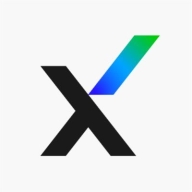

Trellix Advanced Threat Defense and Microsoft Defender for Identity are both leaders in the cybersecurity category. While Trellix stands out with its sophisticated threat detection features, Microsoft excels in identity protection and seamless integration, offering comprehensive security solutions for Microsoft environments.
Features: Trellix Advanced Threat Defense offers advanced malware analysis, real-time behavioral detections, and sandboxing capabilities. Microsoft Defender for Identity shines with features like anomaly detection, deep integration with Microsoft 365, and detailed identity analytics.
Room for Improvement: Trellix could improve in aspects of integration within complex network environments and better support for non-standard protocols, as well as reducing the learning curve for deployment. Microsoft Defender for Identity might focus on enhancing its user interface, increasing support for third-party applications, and providing more customizable alerting options.
Ease of Deployment and Customer Service: Microsoft Defender for Identity offers seamless integration, especially for those already using Microsoft products, making deployment straightforward and supported by proactive customer service. Trellix Advanced Threat Defense can be more challenging to deploy, requiring specialized skills, though it is supported by a responsive customer service team.
Pricing and ROI: Trellix may come with higher initial costs due to tailored threat protection capabilities, yet it offers significant ROI through its detection prowess. Microsoft's pricing is tailored for cost-effective integration within Microsoft environments, leveraging existing infrastructure to provide strong ROI, particularly appealing for those already utilizing Microsoft products.
| Product | Market Share (%) |
|---|---|
| Microsoft Defender for Identity | 6.1% |
| Trellix Advanced Threat Defense | 2.1% |
| Other | 91.8% |

| Company Size | Count |
|---|---|
| Small Business | 7 |
| Midsize Enterprise | 3 |
| Large Enterprise | 14 |
| Company Size | Count |
|---|---|
| Small Business | 3 |
| Midsize Enterprise | 4 |
| Large Enterprise | 5 |
Microsoft Defender for Identity integrates with Microsoft tools to monitor user activity, providing advanced threat detection and analysis using AI. It enhances proactive threat response and security visibility, making it essential for securing on-premises and cloud environments like Active Directory.
Microsoft Defender for Identity offers comprehensive monitoring and AI-driven user behavior analysis. It detects threats through real-time alerts and identifies lateral movements and entity tagging, ensuring robust security management. With excellent visibility via its dashboard, it supports customized detection rules and seamlessly integrates with SIEM platforms. While SecureScore and SecureScan provide robust environment security, there is room for improvement in cloud security, on-premises application integration, and remediation capabilities. Azure integration is limited, and the administrative interface could be more user-friendly. Users experience frequent false positives, affecting threat detection efficiency.
What key features stand out in Microsoft Defender for Identity?In specific industries such as education and finance, Microsoft Defender for Identity is crucial for securing on-premises Active Directory and Azure Active Directory environments. It effectively detects suspicious activities and manages conditional access policies, offering user and entity behavior analytics, endpoint detection and response capabilities. This helps prevent unauthorized access and strengthens overall security, making it an invaluable asset for organizations aiming to safeguard their digital infrastructure.
Uncover Hidden Threats
Combine in-depth static code analysis, dynamic analysis (malware sandboxing), and machine learning to increase zero-day threat and ransomware detection.
Threat Intelligence Sharing
Immediately share threat intelligence across your entire infrastructure—including multi-vendor ecosystems—to reduce time from threat encounter to containment.
Enable Investigation
Validate threats and access critical indicators of compromise (IoCs) needed for investigation and threat hunting.
We monitor all Advanced Threat Protection (ATP) reviews to prevent fraudulent reviews and keep review quality high. We do not post reviews by company employees or direct competitors. We validate each review for authenticity via cross-reference with LinkedIn, and personal follow-up with the reviewer when necessary.